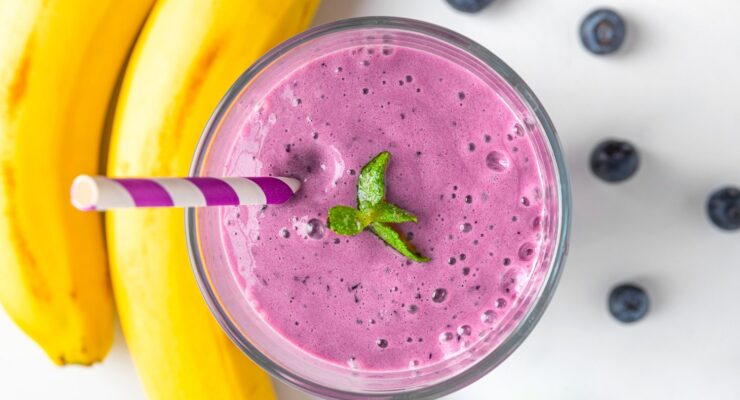
Added sugar is one sneaky ingredient. Take a walk through the grocery store and you’ll find it on many nutrition labels under many different names. Even if you’re on the lookout, it can be easy to miss.
What is Added Sugar?

“All sugar, whether natural or processed, is a type of simple carbohydrate your body uses for energy,” explains Mayo Clinic. Foods like fruits, veggies and dairy products have sugar in them naturally.
Added sugars, on the other hand, are sugars that are added to some foods during processing. They can be added for a variety of reasons, such as taste, texture and preservation. The major sources of added sugar in the average American diet include sugar-sweetened beverages, desserts, sweetened coffee and tea, sweet snacks and candy.
However, added sugars pop up in more than just the sweet stuff. They sneak their way into many foods, like condiments, salad dressings, breads and cereals. They go by many different names too, making it even harder to keep track of how much you’re actually eating. Always check the ingredients and keep an eye out for the different forms of added sugar below:
- agave nectar
- brown sugar
- cane crystals
- cane sugar
- corn sweetener
- corn syrup
- crystalline fructose
- dextrose
- evaporated cane juice
- fructose
- fruit juice concentrates
- glucose
- high-fructose corn syrup
- honey
- invert sugar
- lactose
- malt sugar
- malt syrup
- maltose
- maple syrup
- molasses
- raw sugar
- sucrose
Added Sugar and Health

While added sugar is sweet to the taste, it’s definitely not sweet for your health. According to the 2020-2025 Dietary Guidelines for Americans, “A healthy dietary pattern limits added sugars to less than 10 percent of calories per day.”
The Centers for Disease Control and Prevention (CDC) states that added sugars provide lots of calories with no essential nutrients (also known as empty calories). Eating or drinking too many empty calories can make it difficult to get in all of your required nutrients without going over your daily calories, which can lead to weight gain or obesity.
But gaining weight is just the start: Some evidence shows that consuming too much added sugar can increase the risk of many other health problems, too. These include cardiovascular disease, cognitive issues (such as dementia and Alzheimer’s), diabetes, high blood pressure, high cholesterol and triglycerides, kidney or liver disease, certain cancers, and muscle or nerve damage. It may even lead to tooth decay, inflammation and skin aging, says the American Heart Association (AHA).
A Low Added Sugar Diet

“Individuals have many potential options for reducing the intake of added sugars,” says the 2020-2025 Dietary Guidelines for Americans. “Strategies include reducing portions, consuming these items less often, and selecting options low in added sugars. For those with a weight loss goal, limiting intake of foods and beverages high in added sugars is a strategy to help reduce calorie intake.”
While all of these tips may sound simple, putting them into action can be hard on your own. “When it comes to meeting the dietary guidelines for added sugars, the important thing to remember is progress over perfection,” says Mandi Knowles, Registered Dietitian Nutritionist and Director of Research and Development for Nutrisystem. “Don’t feel pressured or stressed out about having to cut out all added sugars overnight. Assess where you are today with added sugars in your diet, and gradually find ways to reduce your intake,” adds Mandi. And, she reminds us that, “the guidelines recommend no more than 10% of daily calories from added sugars, which equates to capping added sugars out at about 37 grams daily on a 1,500 calorie meal plan. So while it is important to limit added sugars, complete avoidance isn’t absolutely necessary if you find that isn’t going to be sustainable for you long-term.”
The addition of added sugars to the Nutrition Facts label in 2021 has definitely helped make limiting added sugar easier. However, keeping track of the amount you eat each day can make DIY diets on your own a whole lot more stressful.
That’s why a weight loss program that already fits into these guidelines can make a world of difference in reducing your sugar intake and achieving your goals. Instead of trying to plan, calculate and cook every meal from scratch, lean on a plan that has all the work done for you.
The Nutrisystem program is a low added sugar weight loss plan that not only helps you lose weight, but also teaches you how to keep it off. Our perfectly portioned meals and snacks are delicious and convenient. Plus, many of them are free of added sugar: Check out these Nutrisystem meals and snacks that contain no added sugar!
With Nutrisystem, you don’t have to worry about reading the Nutrition Facts label on every single meal and snack you eat. Our programs provide balanced nutrition with a high-protein, lower-glycemic approach designed by dietitians to control hunger and help manage your blood sugar levels.
By choosing the right recommended grocery add-ins and enjoying the easy-to-prep meals and snacks that we send you, you’ll lose weight and get healthy without having to constantly worry about your sugar intake. You’ll get to enjoy lean proteins, healthy fats, smart carbs like dietary fiber and nutrient rich vegetables. Plus, it will take away the stress of meal planning so you can kick back, relax and enjoy your journey to a healthier, happier you!
Get started with a Nutrisystem weight loss plan today!









